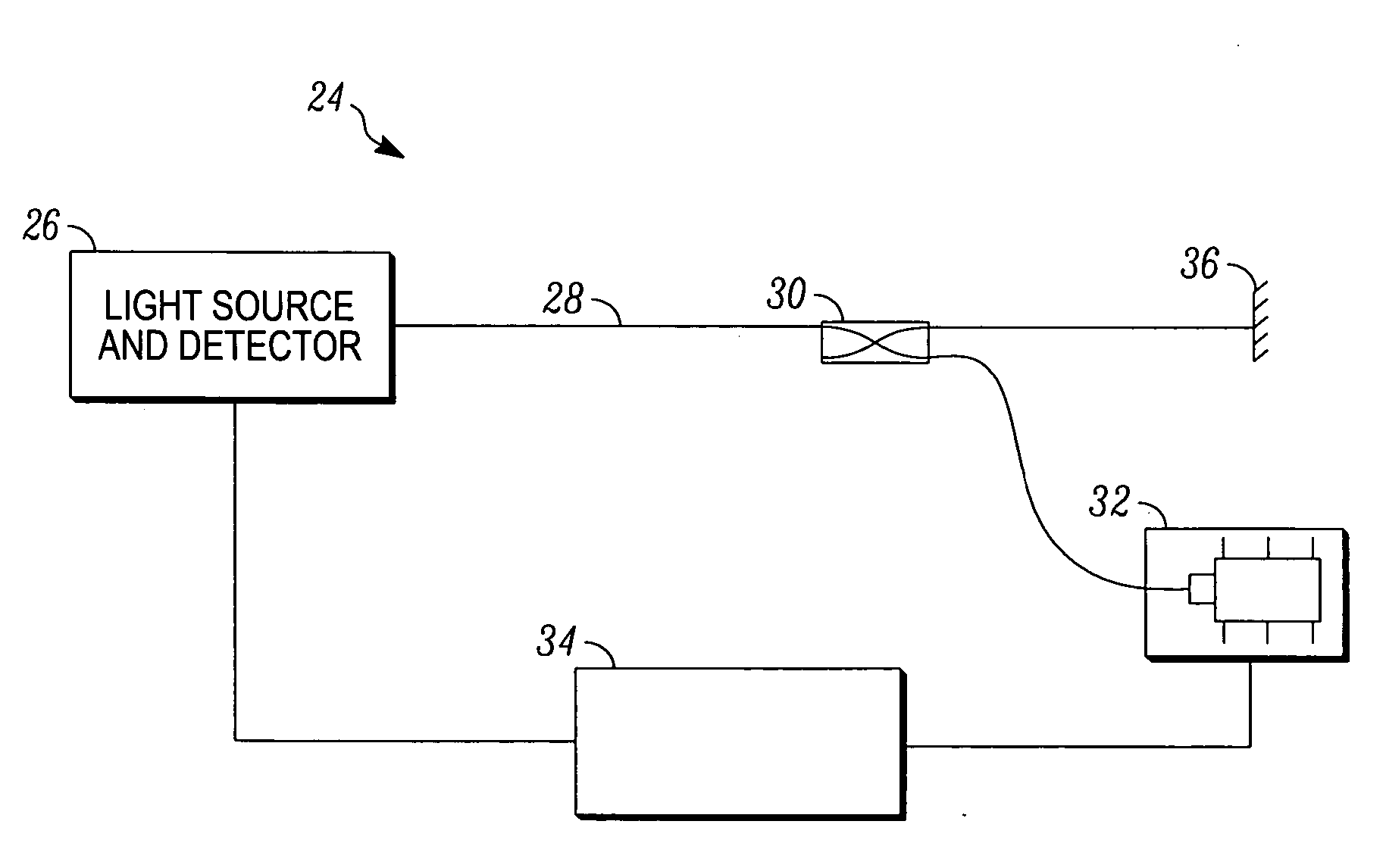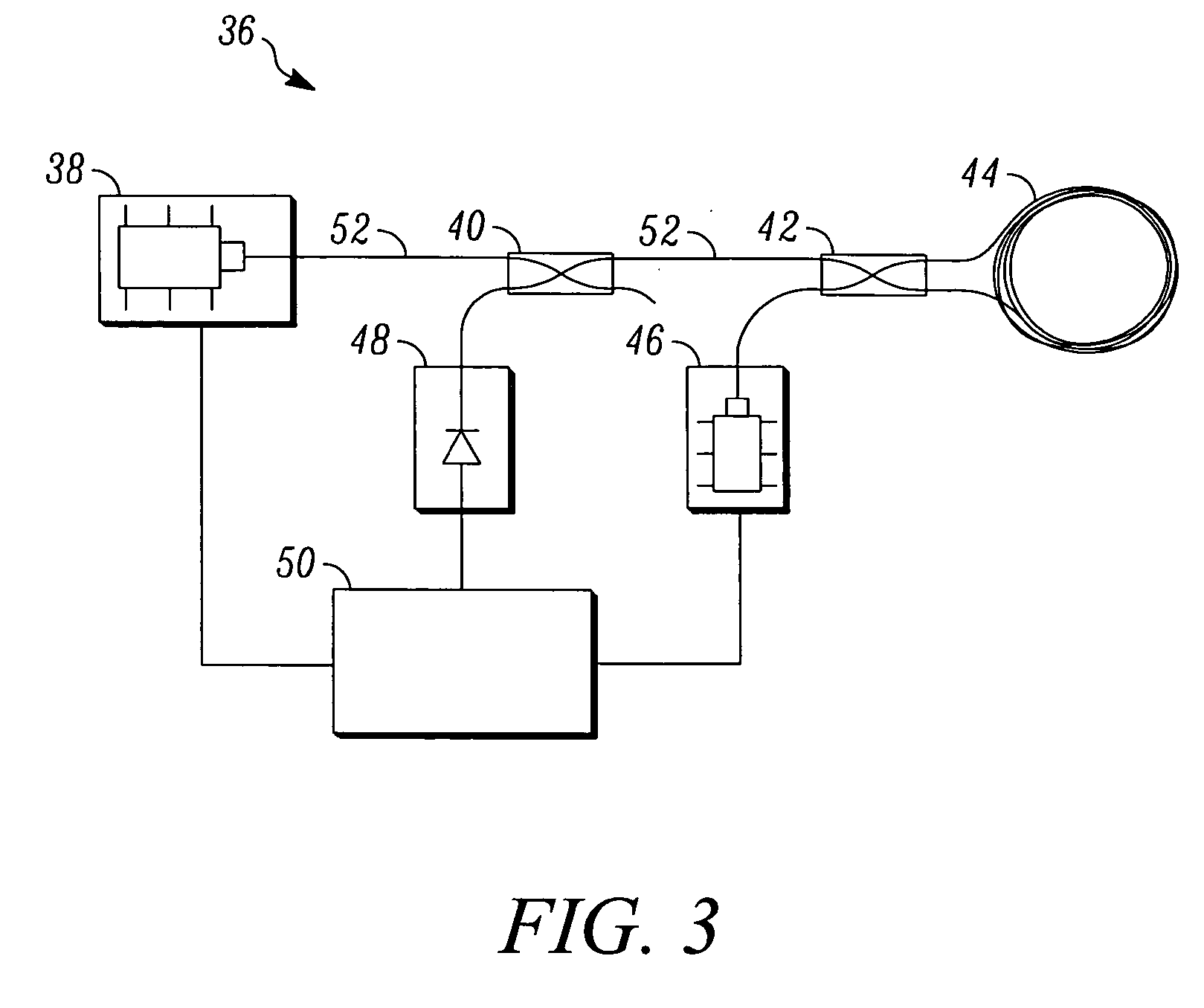Method and system for adjusting the sensitivity of optical sensors
a technology of optical sensors and sensitivity adjustment, applied in the field of optical sensors, can solve the problems of limited resolution of optical sensors using an otdr, different amounts of time to return, and limited sensitivity of such optical sensors
- Summary
- Abstract
- Description
- Claims
- Application Information
AI Technical Summary
Problems solved by technology
Method used
Image
Examples
Embodiment Construction
[0015] The following detailed description is merely exemplary in nature and is not intended to limit the invention or the application and uses of the invention. Furthermore, there is no intention to be bound by any expressed or implied theory presented in the preceding technical field, background, brief summary or the following detailed description. It should also be noted that FIGS. 1-3 are merely illustrative and may not be drawn to scale.
[0016]FIG. 1 illustrates a fiber optic sensor 10. The fiber optic sensor 10 includes a light source and detector 12 and an optical fiber 14 coupled to an output of the light source and detector 12. The optical fiber 14 includes a reflector 16 at an end thereof opposing the light source and detector 12 and a beam splitting feature 18 at a middle portion thereof. The reflector 16 may be any one of numerous types of reflective devices such as a mirror, a right-angle cleaved end, or simply an end cap connected to the optical fiber 14. The beam split...
PUM
 Login to View More
Login to View More Abstract
Description
Claims
Application Information
 Login to View More
Login to View More - R&D
- Intellectual Property
- Life Sciences
- Materials
- Tech Scout
- Unparalleled Data Quality
- Higher Quality Content
- 60% Fewer Hallucinations
Browse by: Latest US Patents, China's latest patents, Technical Efficacy Thesaurus, Application Domain, Technology Topic, Popular Technical Reports.
© 2025 PatSnap. All rights reserved.Legal|Privacy policy|Modern Slavery Act Transparency Statement|Sitemap|About US| Contact US: help@patsnap.com



